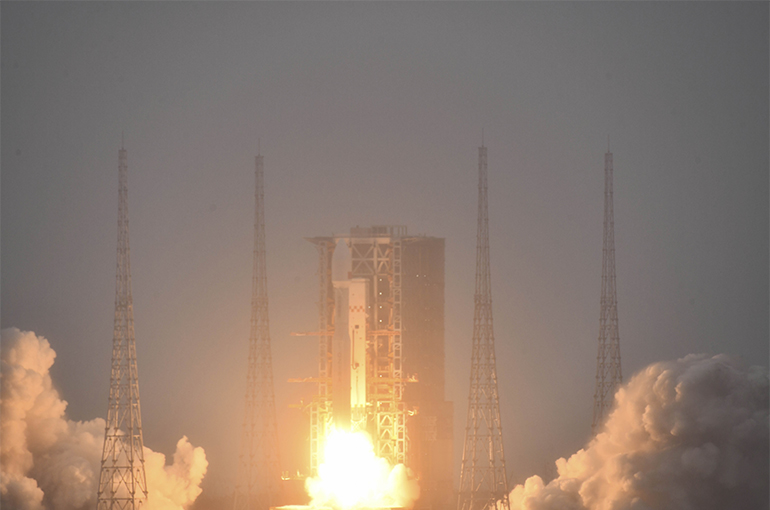 China's Improved Long March-8 Carrier Rocket Makes Maiden Flight
China's Improved Long March-8 Carrier Rocket Makes Maiden Flight(Yicai) Feb. 12 -- The improved version of China's Long March-8 carrier rocket has successfully conducted its maiden flight.
Long March-8A, developed by China Aerospace Science and Technology's subsidiary China Academy of Launch Vehicle Technology, yesterday sent a group of low-orbit satellites into space from the Wenchang Space Launch Site in southern Hainan province, Xinhua News Agency reported on the same day.
The new rocket carrier retains the core first stage and boosters of the Long March-8, while its core second stage features a newly developed universal hydrogen-oxygen final stage with a 3.35-meter diameter, paired with a 5.2-meter-diameter fairing.
This unique configuration increases Long March-8A's payload capacity to 7 tons from 5 tons, according to Song Zhengyu, the rocket's chief designer.
With the new model, the Long March-8 series can flexibly meet different launch requirements, which is very beneficial to building satellite constellations, Song noted, adding that more technical innovations will be introduced in the future to further reduce launch costs.
China began building its own satellite constellations, consisting of tens of thousands of communication satellites for global internet services, in response to US aerospace firm SpaceX's Starlink project.
One of China's most advanced satellite constellation projects is Shanghai Spacecom Satellite Technology’s Spacesail Constellation. SSST had launched 72 satellites and formed four networks as of Jan. 31, with plans to launch a total of 648 satellites in the first phase by the end of this year, Chief Executive Officer Bu Zhiyong said earlier.
As the building of satellite constellations accelerates, the Long March-8 series will begin launching on a regular basis, with about 12 missions expected to be completed this year, Qu Fang, investment consultant at Wanlian Securities, told Yicai.
Editors: Dou Shicong, Futura Costaglione